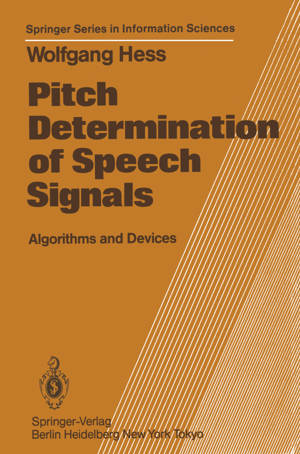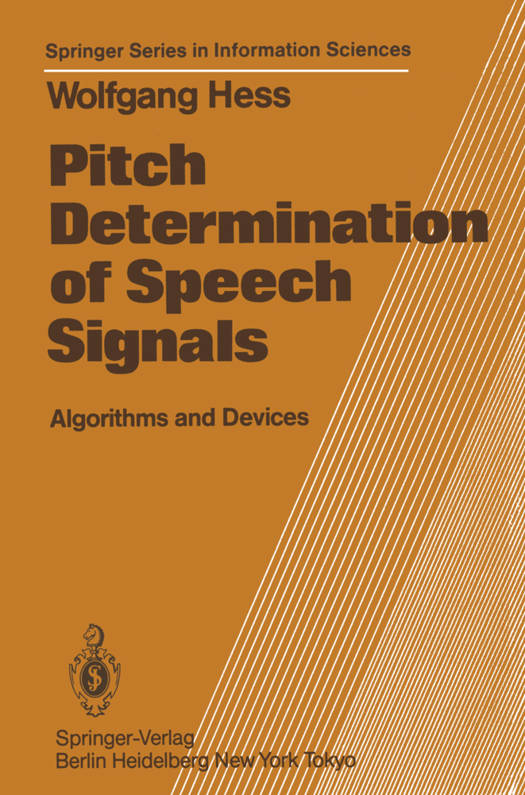
- Afhalen na 1 uur in een winkel met voorraad
- Gratis thuislevering in België vanaf € 30
- Ruim aanbod met 7 miljoen producten
- Afhalen na 1 uur in een winkel met voorraad
- Gratis thuislevering in België vanaf € 30
- Ruim aanbod met 7 miljoen producten
Zoeken
Omschrijving
Pitch (i.e., fundamental frequency FO and fundamental period TO) occupies a key position in the acoustic speech signal. The prosodic information of an utterance is predominantly determined by this parameter. The ear is more sensitive to changes of fundamental frequency than to changes of other speech signal parameters by an order of magnitude. The quality of vocoded speech is essentially influenced by the quality and faultlessness of the pitch measure- ment. Hence the importance of this parameter necessitates using good and reliable measurement methods. At first glance the task looks simple: one just has to detect the funda- mental frequency or period of a quasi-periodic signal. For a number of reasons, however, the task of pitch determination has to be counted among the most difficult problems in speech analysis. 1) In principle, speech is a nonstationary process; the momentary position of the vocal tract may change abruptly at any time. This leads to drastic variations in the temporal structure of the signal, even between subsequent pitch periods, and assuming a quasi-periodic signal is often far from realistic. 2) Due to the flexibility of the human vocal tract and the wide variety of voices, there exist a multitude of possible temporal structures. Narrow-band formants at low harmonics (especially at the second or third harmonic) are an additional source of difficulty. 3) For an arbitrary speech signal uttered by an unknown speaker, the fundamental frequency can vary over a range of almost four octaves (50 to 800 Hz).
Specificaties
Betrokkenen
- Auteur(s):
- Uitgeverij:
Inhoud
- Aantal bladzijden:
- 700
- Taal:
- Engels
- Reeks:
- Reeksnummer:
- nr. 3
Eigenschappen
- Productcode (EAN):
- 9783642819285
- Verschijningsdatum:
- 16/12/2011
- Uitvoering:
- Paperback
- Formaat:
- Trade paperback (VS)
- Afmetingen:
- 156 mm x 234 mm
- Gewicht:
- 988 g

Alleen bij Standaard Boekhandel
+ 290 punten op je klantenkaart van Standaard Boekhandel
Beoordelingen
We publiceren alleen reviews die voldoen aan de voorwaarden voor reviews. Bekijk onze voorwaarden voor reviews.








